With the UK in the midst of a skills shortage in the construction sector, scaffolders are more sought after than ever. In fact, those with the qualifications and skillsets required to become a scaffolder are earning more than ever due to the heightened demand for their services. So, if you’re a school leaver looking to start your career in the construction industry or someone eyeing a career change, keep reading as we explain how to become a scaffolder.
Career Guide: How To Become A Scaffolder
In this article, we’ll walk you through everything you need to know about a career in scaffolding, including what you’ll be doing, how much you could earn and your opportunities for career progression. As one of the UK’s top scaffolding supplies outlets, our team has been in and around the industry for decades, so you can trust our expertise.
- What Does A Scaffolder Do?
- How Do You Become A Scaffolder?
- How Long Does It Take To Become A Scaffolder?
- How Much Do Scaffolders Make?
- Benefits Of A Career As A Scaffolder
- What Is Career Progression Like As A Scaffolder?

What Does A Scaffolder Do?
Scaffolders play a crucial role in ensuring the safety and efficiency of work sites that operate across multiple levels. They are responsible for erecting and dismantling scaffolding so other construction professionals can safely work at heights. The integrity of scaffolding directly impacts the quality of the construction, so scaffolders are vital to the success of a project.
A scaffolder’s day-to-day tasks can vary depending on the project, but these are some of the most common tasks performed by a scaffolder:
Unloading equipment
Before any work can begin, the equipment must be unloaded. This includes scaffolders unloading the required amount of boards, tubes, beams, fittings and other scaffolding items. This equipment is usually unloaded before the rest of the construction equipment, as work cannot commence fully until the scaffolding has been set up.
Setting up the scaffolding poles
Once the correct equipment has been unloaded, the scaffolders will begin building the structure. Base plates are set on the ground at regular intervals to help spread the weight of the scaffolding evenly, the standards are connected to the ledgers and transforms, and the joint pins connect the poles together.
Fixing the scaffolding to the structure
Before work at height can begin, the scaffolding must be securely fixed to the building or structure. Scaffolders usually use short tie tubes to keep the verticle poles upright.
Laying down planks
Once the pole frame of the scaffolding has been securely fixed in place, scaffolders can lay down the planks, which form the base for construction workers to walk on. Wooden planks can be slippery due to rain or frost, so it’s essential for workers to assess the condition each day and make sure they’re wearing regulation, non-slip shoes.
Adding safety measures
Scaffolders are responsible for adding safety measures to the scaffolding that they’ve erected. They’ll attach guard rails at all open sides and ends of a scaffold and add safety netting to catch anything that falls. They must also inspect the scaffolding at least once every seven days while it is up.
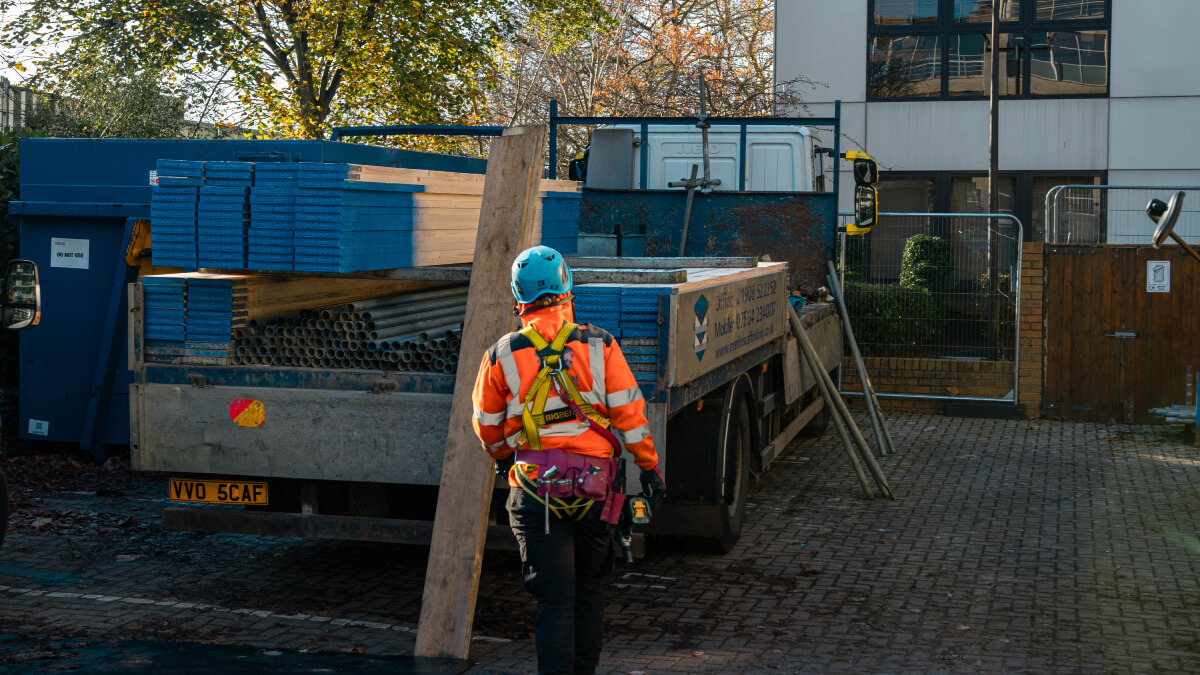
How Do You Become A Scaffolder?
There are four different ways to become a scaffolder. These are:
College
College courses like Construction Operations, Scaffolding, or T Level in Onsite Construction will give you the basic skills required to secure a trainee or apprenticeship position with a scaffolding company. The entry requirements for these courses vary depending on which college you attend. Use the National Careers Service to find a course near you.
Apprenticeship
The Scaffolder Level 2 Intermediate Apprenticeship takes up to two years to complete and usually requires some GCSEs, including English and maths, or equivalent to enter. It involves on-the-job training and theoretical development off-site to teach participants how to erect, alter, and dismantle scaffolding.
Training and assessment must be delivered by a Construction Industry Scaffolders Record Scheme (CISRS) accredited training centre. Apprentices earn a real wage for the duration of their program and can expect to earn at least £4.81 per hour.
Work
Starting as a trainee scaffolder or scaffolding labourer at a company allows you to pursue qualifications while working. Employers will seek candidates with a solid educational foundation. While not always mandatory, having GCSEs in math, English, science, and design and technology can be advantageous. Effective communication, coordination, punctuality, and safety consciousness are also valuable skills sought by employers.
Skills Boot Camp
If you’re wanting to fast-track your training, a skills boot camp training course in scaffolding or construction will give you the skills required to apply for a trainee scaffolder or scaffolder’s labourer position with a construction company. The Scaffolding Association and City & Guilds have recently announced a number of fully funded skills boot camps in an attempt to fill the shortage of scaffolders. The full list of boot camps can be found here.
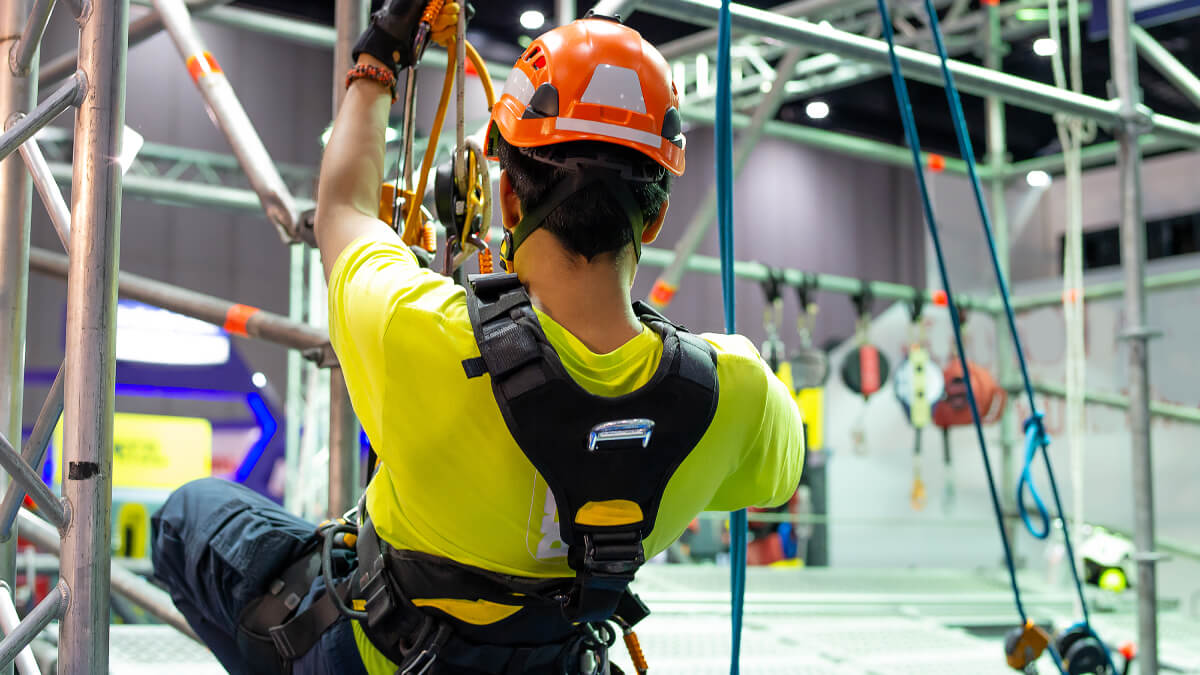
How Long Does It Take To Become A Scaffolder?
The length of time it takes to become a fully qualified scaffolder depends on the route you chose to obtain your qualifications. Typically, it takes between 18 months and three years. Before you’re completely trained, you’ll need to pass your examinations with an authorised training provider, receive a CISRS card, and find scaffolding businesses with which to gain experience. For these reasons, the time it takes to qualify can vary.
If you opt for an apprenticeship, you’ll be employed by a construction company and will work a minimum of 30 hours a week. That’s why apprentices often develop their skills very quickly and complete their intermediate scaffolder apprenticeship in 18 months. Alternatively, skills boot camps are designed so participants leave them job-ready for one of the UK’s most in-demand sectors and can be completed in 16 weeks.

How Much Do Scaffolders Make?
The exact salary you can earn as a scaffolder will depend on your qualifications, skills, experience, and where you’re based – as well as the size and complexity of the scaffolding jobs you do. In London and other large cities, wages can be higher due to the increased cost of living. Scaffolders also often earn more if they work overtime, at weekends, or on specialised projects like industrial or offshore scaffolding.
To help you work out how much you can earn, here’s roughly how much scaffolders get paid a year in the UK, depending on their level of experience, according to Checkatrade:
- Apprentice scaffolder – £11,060 (£10,720 take home)
- Newly qualified scaffolder – £31,940 (£25,210 take home)
- Employed scaffolder – £40,100 (£30,760 take home)
- Sole trader scaffolder – £56,050 (£37,590 take home)
- Scaffolding company owner – £56,830 (£37,510 take home)
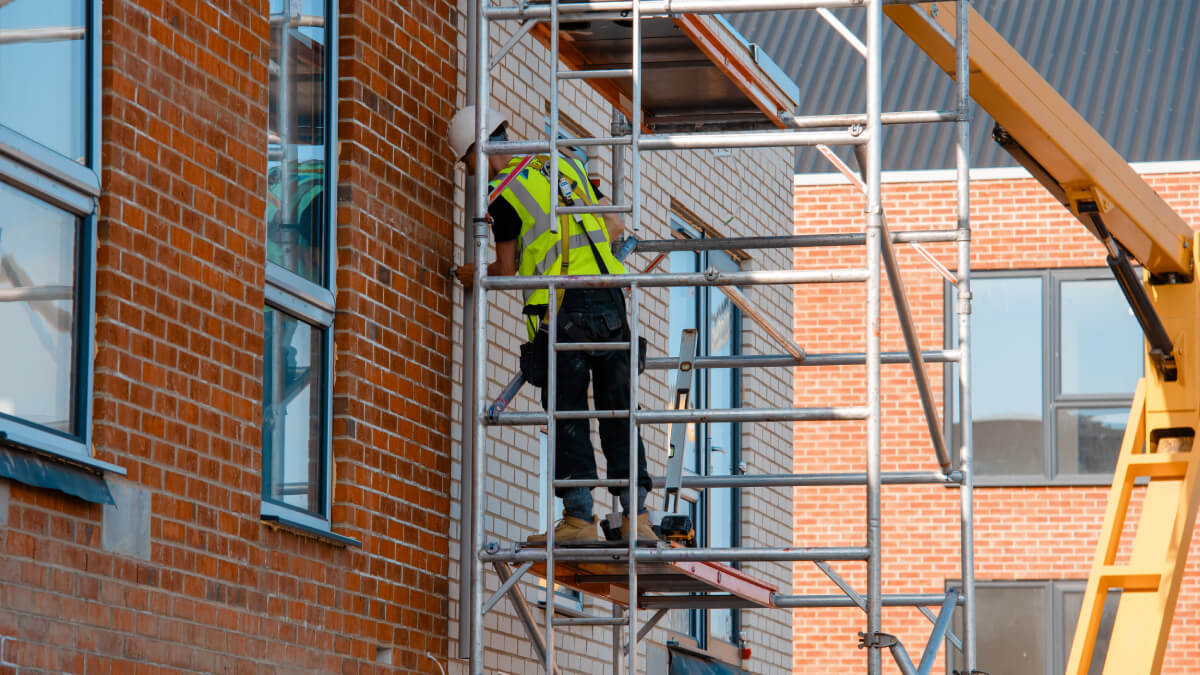
Benefits Of A Career As A Scaffolder
Building a career in scaffolding can provide a steady income for individuals with the right expertise and experience. Working as a scaffolder or in the construction industry is a great option for those who don’t want to be stuck behind a desk all day. Some of the main benefits of working as a scaffolder include:
Job Security
The construction industry offers a high level of job security because construction professionals like scaffolders are always required. This security has only increased with the industry’s skills shortage.
Career Progression
There are various ways to advance in the construction sector once you have gained some experience. If you are serious about improvement, consider enrolling in training classes to further your education and skills. You could also consider starting your own business and becoming self-employed.
Good Path For School Leavers
Becoming a scaffolder is an excellent option for those who don’t wish to attend university. You’ll gain working experience straight out of school and get paid as you learn on the job.
Varied Workload
While the work is very physically different, no two days as a scaffolder are the same. Scaffolders frequently travel to different job locations and take on different roles according to project-specific needs. Additionally, many scaffolding elements are universal, so experienced scaffolders can work anywhere.
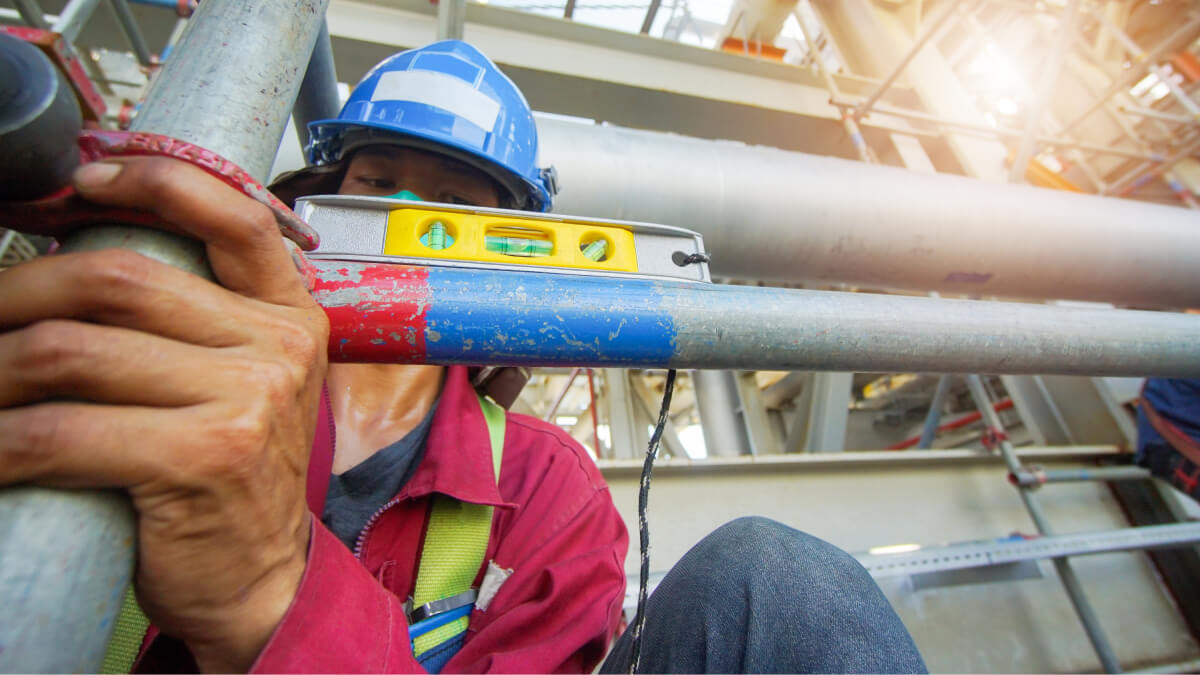
What Is Career Progression Like As A Scaffolder?
As you start your career as a scaffolder, there are several paths to advance. With experience and additional training, you could progress into a lead scaffolder or scaffolding supervisor role, overseeing projects and teams. Further qualifications can lead to roles in scaffolding design or safety inspection. Once you’ve amassed enough experience in the industry, you might choose to start your own scaffolding business or focus on the development of others and move into a training role.
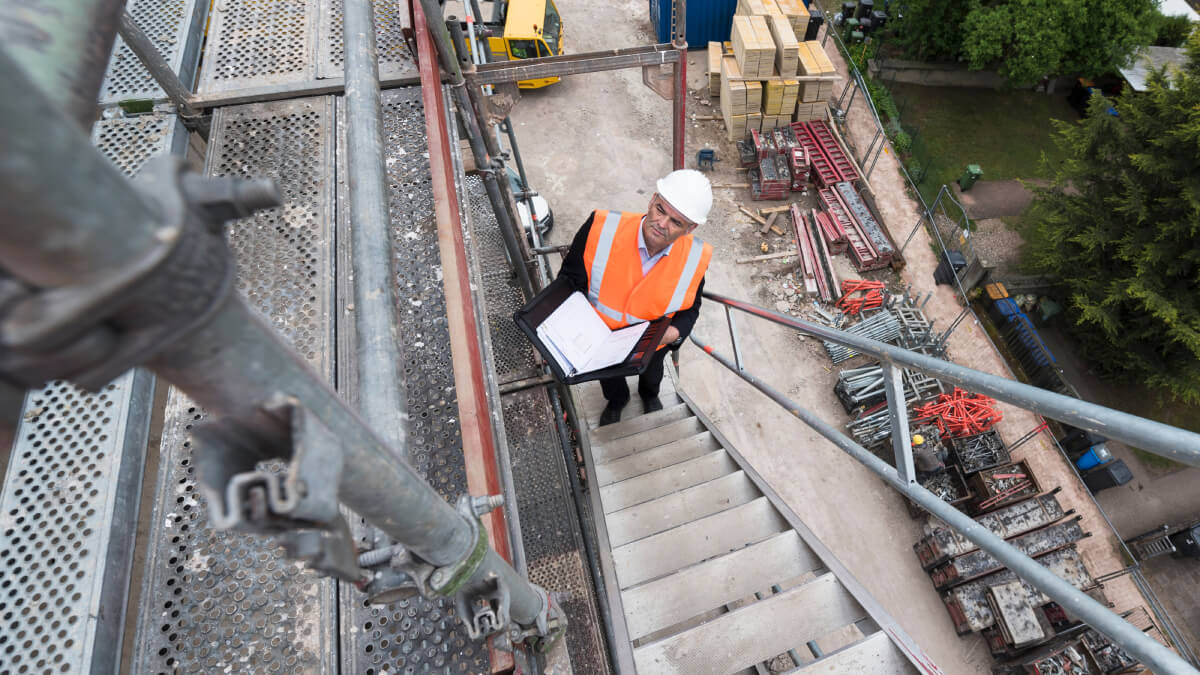
Get Into Scaffolding
Becoming a scaffolder requires a lot of training and hard work because the role is integral to the safety of any construction project that involves working at height. However, once qualified, you open the door to a wide range of benefits, including job security and a varied workload. Additionally, a career in scaffolding involves plenty of progression and often presents the opportunity to start your own scaffolding business.
If you already own a scaffolding business or are an experienced scaffolder looking to manage projects of your own, stock up on all of your scaffolding necessities at Merlin Scaffold Supplies. We’re among the UK’s most affordable places to buy scaffold beams, boards, tubes and all other scaffold supplies.

